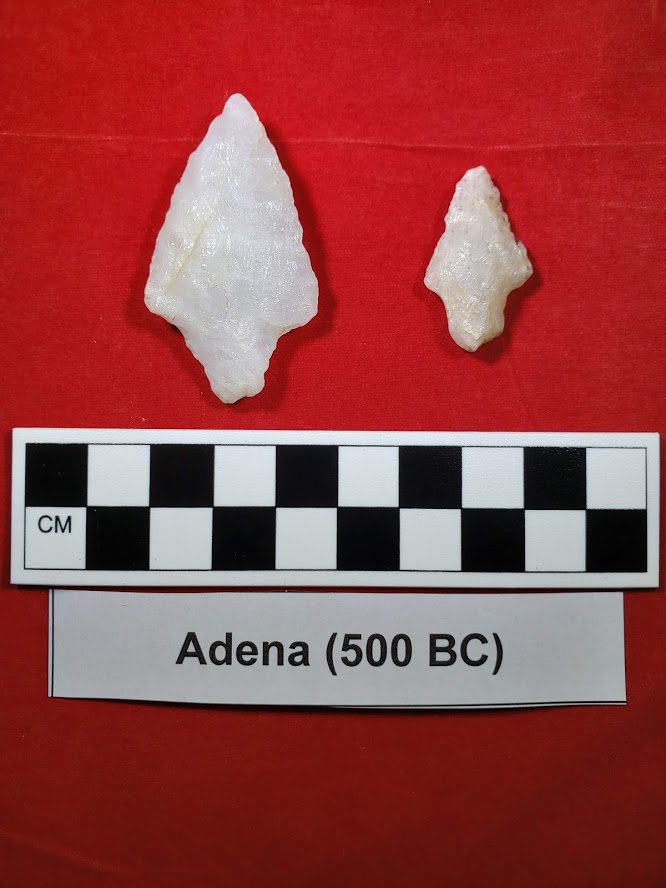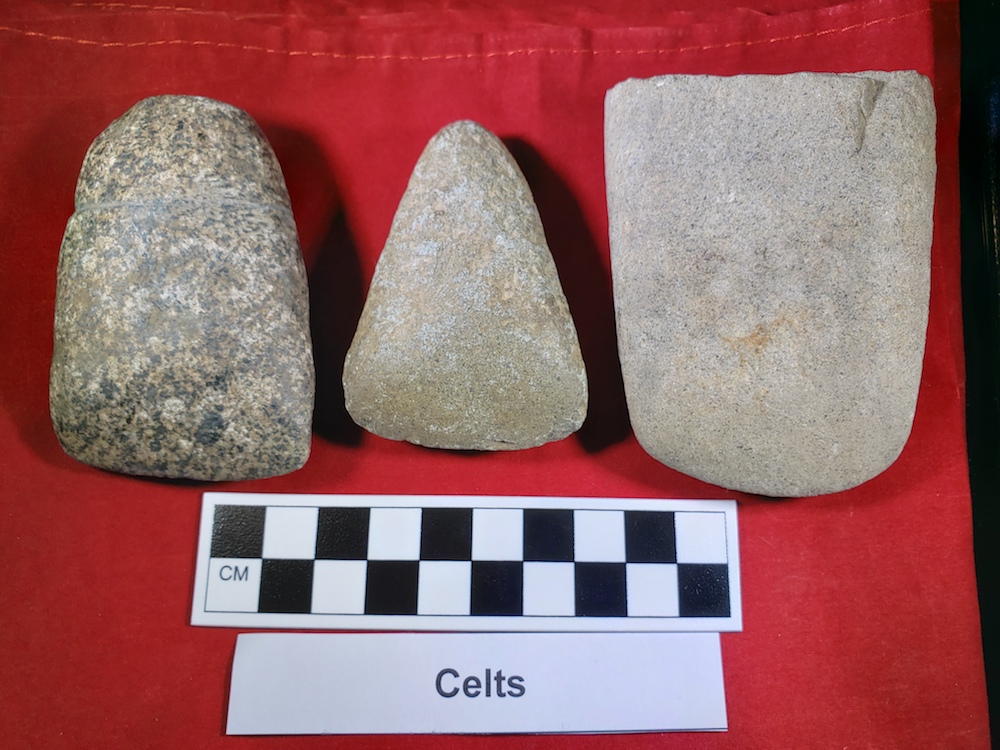Native American artifacts go on display in Cutchogue

The Cutchogue-New Suffolk Historical Council is set to open a new permanent exhibit of artifacts found near the historic Fort Corchaug site, collected decades ago by Cutchogue farmer Harold Grathwohl.
The exhibit, housed in The Red Barn on the Cutchogue Village Green, is the result of a collaboration between Southold Indian Museum president Lucinda Hemmick and Cutchogue-New Suffolk Library historical librarian Mariella Ostroski.
Mr. Grathwohl, who died in 1958, collected the items from the 1920s to the 1940s. The family’s farm in Cutchogue bordered several others as well as Fort Corchaug, built by Native Americans with the help of early settlers and known as a contact-era fort. The fort’s name derives from the local tribe of Native Americans who, it is believed, were called the Corchaugs.
“There are several of these contact forts in the Northeast, and these are of great interest to archaeologists because it represents the first contact between the Native Americans and the Europeans,” said Ms. Hemmick, who identified and curated the objects in the exhibit. “All this contact era stuff is very fascinating.”
The artifacts on display include items used by Native Americans in their daily lives, Ms. Hemmick said, such as knives, ceramics and implements like grinders and pestles, as well as weapons with a beveled cutting edge, called celts. The oldest items in the collection date back to around 2000 B.C.

Hemmick said a number of points, the term used by archaeologists for what are commonly called arrowheads, are also in the collection, along with historic stones.
“Some of the stones are very unusual for the area, which would indicate some travel or trade involved,” Ms. Hemmick said. “This is how we trace travel and trade patterns thousands of years ago.”
Fort Corchaug remains one of the few undisturbed Native American fortified village sites in the Northeast and was declared a National Historic Landmark in 1999.
“Grathwohl is collecting from a region that borders the Fort Corchaug, in an area that was undeveloped and no one had looked there before,” Ms. Hemmick said. “So it’s quite possible that many of the things in his collection, even though they’re not labeled professionally, might’ve been used at or associated with Fort Corchaug.”
Staff from Cutchogue New-Suffolk Library and the Southold Indian Museum will host an opening reception for the exhibit in the Red Barn, at the corner of Case’s Lane and Main Road, Wednesday, July 17, at 7 p.m. It is open to the public.
Photo caption: Tools and everyday Native American items were collected from the Fort Corchaug site. (Southold Indian Museum courtesy photo)









